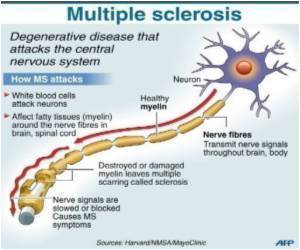In the recent research work it is pointed out that damage caused by multiple sclerosis could be reversed by activating the stem cells that aids to repair the injury in central nervous system.

In multiple sclerosis, loss of myelin leads to the nerve fibres in the brain becoming damaged. These nerve fibres are important as they send messages to other parts of the body.
The scientists believe that this research will help in identifying drugs to encourage myelin repair in multiple sclerosis patients.
Robin Franklin, Director of the MS Society's Cambridge Centre for Myelin Repair at the University of Cambridge, said: "Therapies that repair damage are the missing link in treating multiple sclerosis. In this study we have identified a means by which the brain's own stem cells can be encouraged to undertake this repair, opening up the possibility of a new regenerative medicine for this devastating disease."
Charles ffrench-Constant, of the University of Edinburgh's MS Society Centre for Multiple Sclerosis Research, said: "The aim of our research is to slow the progression of multiple sclerosis with the eventual aim of stopping and reversing it. This discovery is very exciting as it could potentially pave the way to find drugs that could help repair damage caused to the important layers that protect nerve cells in the brain."
The study was published in Nature Neuroscience.
Advertisement















